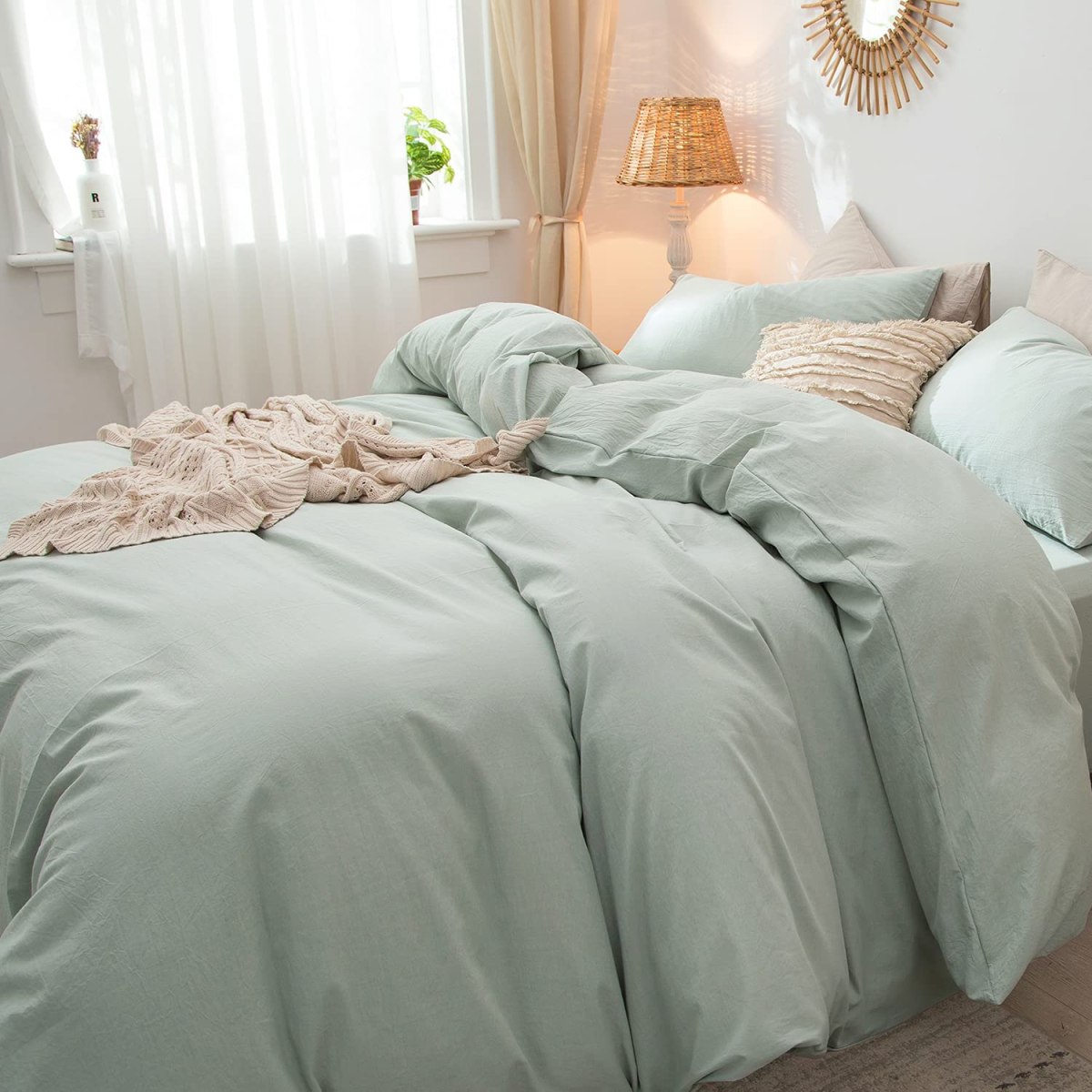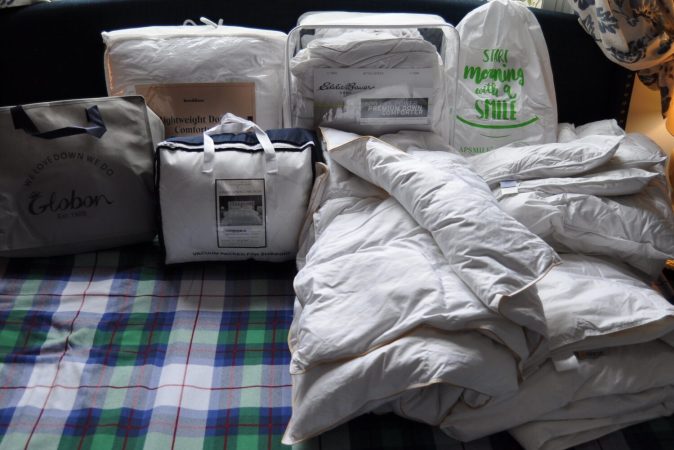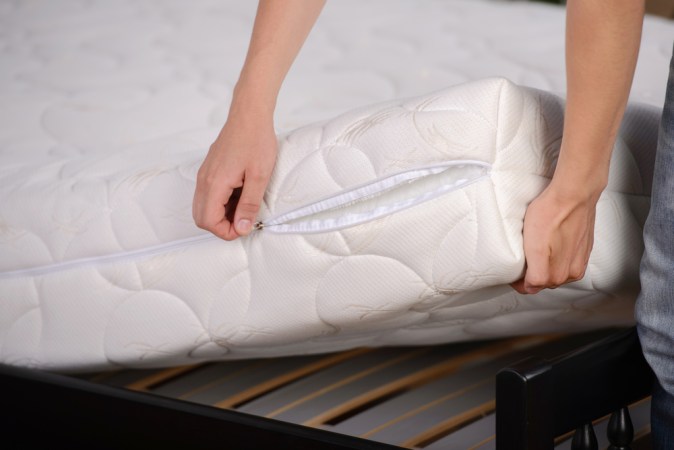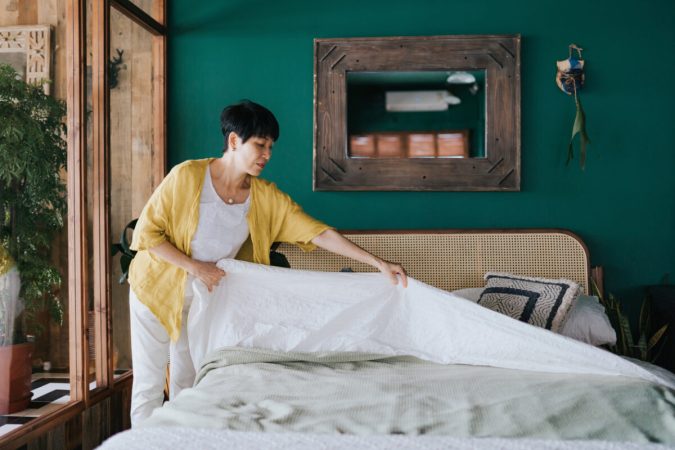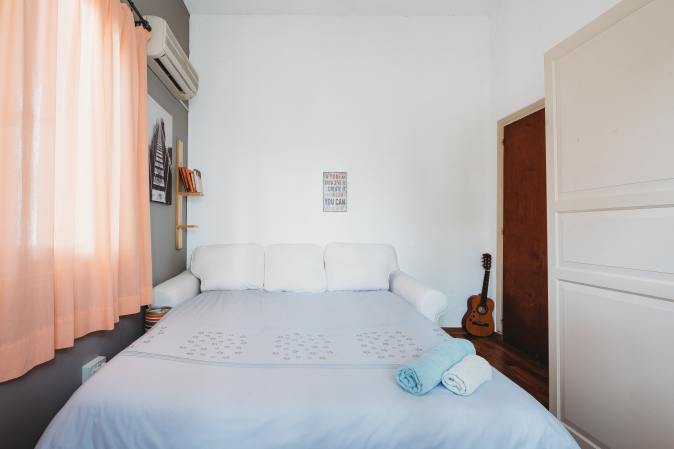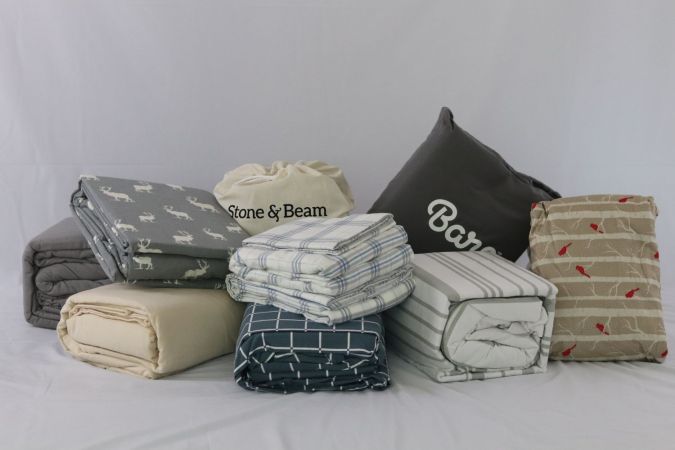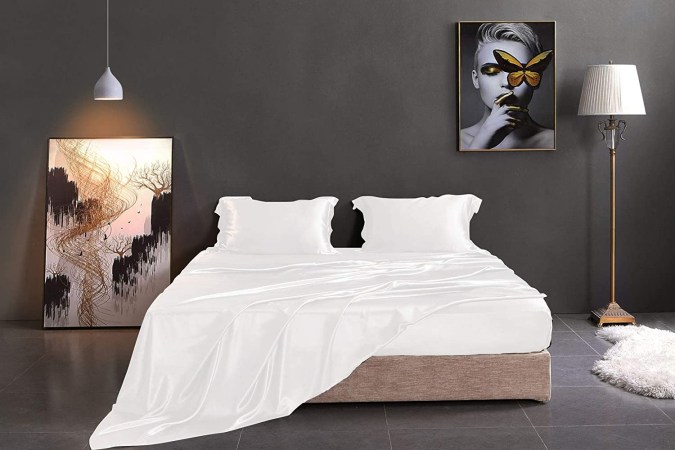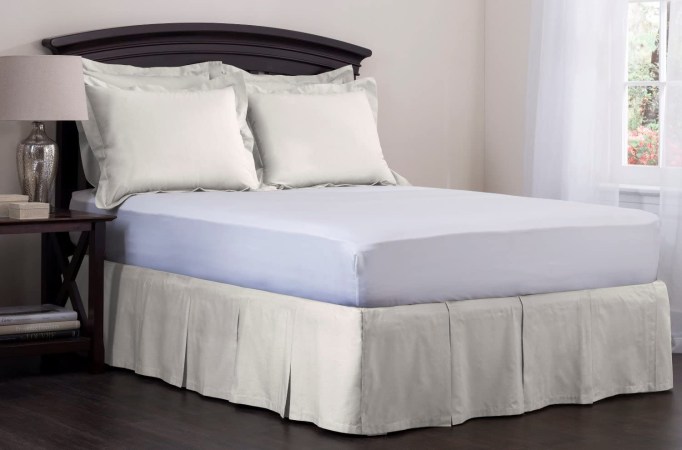We may earn revenue from the products available on this page and participate in affiliate programs. Learn More ›
Q: While shopping for bedding, I noticed many products labeled as “duvet covers.” What is a duvet cover, and what is it used for? What’s the difference between a comforter and a duvet?
A: When it comes to choosing bedding, the available options can be overwhelming. Shoppers not only have to find the perfect sheet set for the mattress size, but they also have to decide whether they want a comforter, a quilt, or a duvet.
A duvet is a style of blanket that is filled with either down, feathers, cotton, or a synthetic material. Unlike quilts or comforters, which have durable protective shells, duvet inserts are designed to be used with a protective cover.
To confuse things even further, while the term “duvet” is popular in Europe, duvets may simply be referred to as “comforters” in the United States. This guide will tell you everything you need to know about duvet covers and help you decide whether you want one for your home’s bedrooms.
A duvet cover is a protective layer for a duvet.
A duvet cover is to a duvet what a pillowcase is to a pillow. What goes in a duvet cover? Duvet inserts. And given that they are filled with natural down or feathers, they tend to be expensive. Duvet covers protect the duvet from dirt and dust while simultaneously preventing rips and tears in the shell. Since duvets are often filled with feathers, the duvet cover also protects the user from being poked with pointy quills if they break through the duvet’s shell. You’ll get a lot more life out of a duvet insert if you keep it covered.
Duvet covers typically are more washer-friendly than most inserts, and washing bedding weekly in hot water is one of the steps the American Lung Association recommends to reduce dust mites and the allergies or asthma they trigger. A duvet cover cannot necessarily protect against allergens or dust mites on its own, however. Covers labeled as hypoallergenic can do more; they are designed to keep new dust mites and dead skin cells from settling into the insert beneath. Some research has shown that mite-proof bedding covers can reduce exposure to dust mite allergens, but they will not noticeably improve symptoms in sleepers who have allergies.
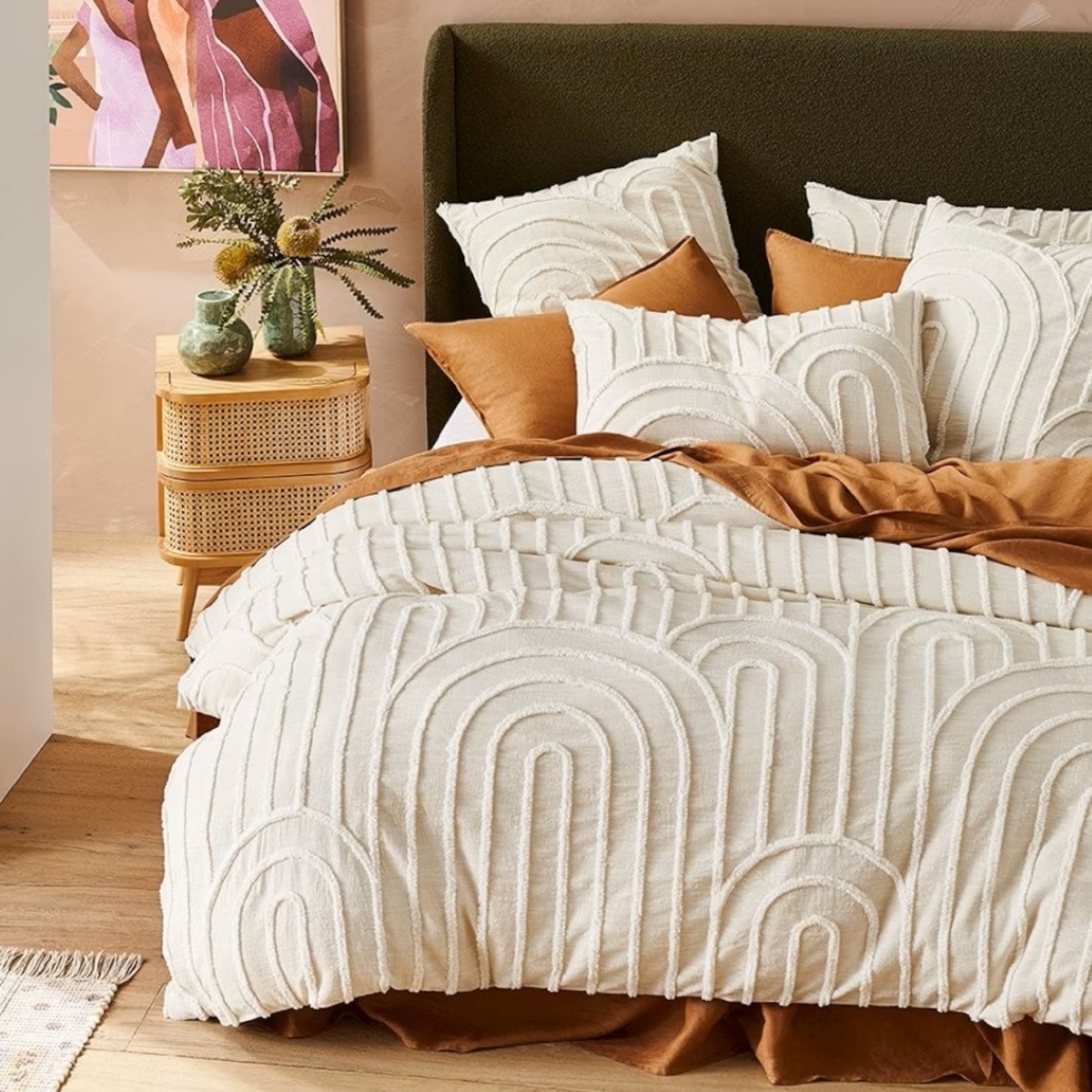
Duvet covers come in a wide variety of materials.
While most duvet covers on the market are made from cotton, they may also be made from linen, silk, and synthetic fibers. Egyptian and Pima cotton are considered the highest-quality options on the market because their long fibers make the fabric soft and durable. If it’s in your budget, a duvet cover made from a natural material usually offers optimal comfort and longevity.
Beyond the material, the way the fibers are woven also affects how a duvet cover feels and performs. Percale weaves are crisp and cool, sateen weaves are soft and silky, and flannel is tightly woven for a warm and cozy feel.
Duvet covers come in sizes to fit most every bed.
Duvet covers typically come in sizes to match those of the bed’s mattress, though their dimensions can differ by brand. Having said that, a duvet cover should probably overhang each side of the bed by about 15 or 16 inches and the bed’s length by at least a foot (more for thick mattresses). So, a queen-size mattress might measure 60 inches wide by 85 inches long, but a queen duvet cover could be as large as 90 by 94 inches. Some experts suggest buying a duvet twice the size of the mattress for co-sleepers, but exact size depends on the look you prefer, ensuring plenty of cover for both sleepers, and avoiding heavy or unsightly overhang.
The size of the cover also should match the insert, although there is some wiggle room. Some people prefer a fluffier look and opt for a duvet cover that is a few inches smaller than the insert. Others prefer that the cover be slightly larger to make it easier to put the cover over the insert. Beware of opting for too large a cover; the insert can slip around inside if it does not have corner ties. In short, measure the mattress before selecting a duvet size, and buy inserts and covers as sets if you want to ensure they will fit well together.
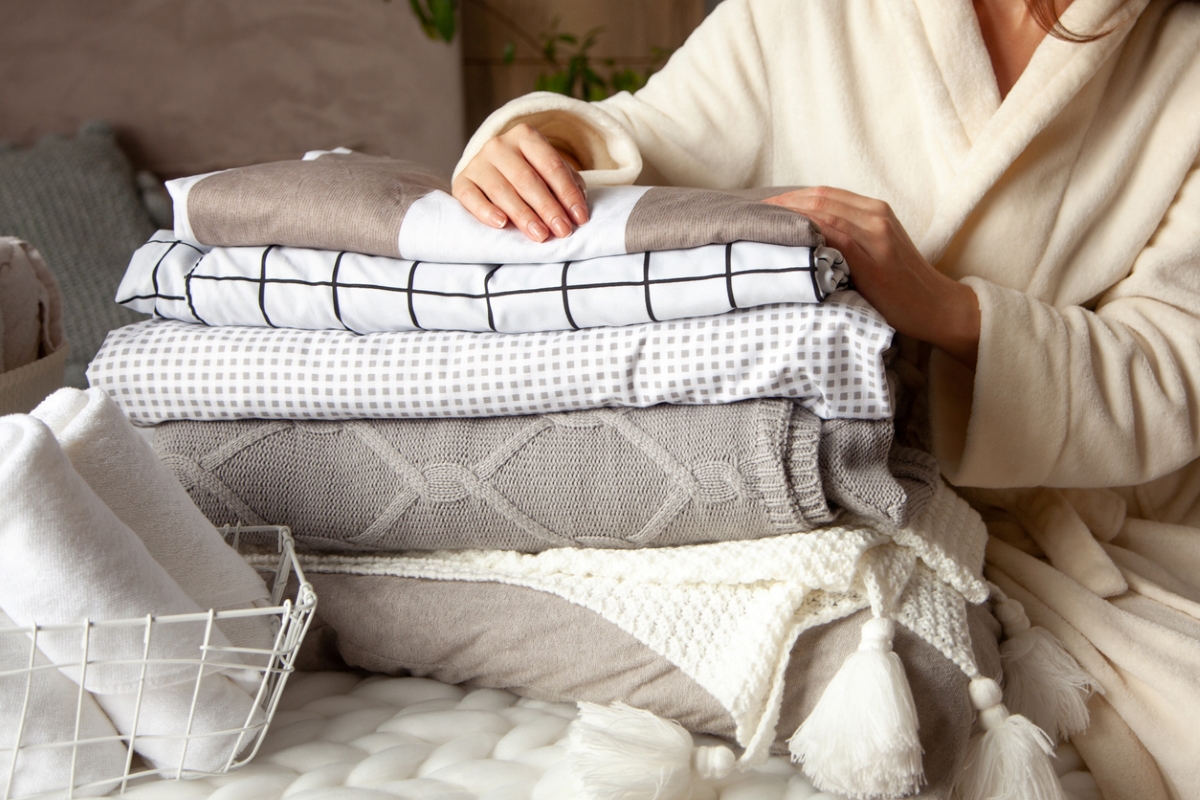
Washing a duvet cover is easier than washing a duvet insert.
Duvet inserts are bulky, difficult to wash and may require dry cleaning. A duvet cover, which is about as bulky as two bed sheets sewn together, protects the insert so you don’t have to launder it as frequently. Duvet covers are usually machine washable and can be laundered with your sheets and pillowcases. How often should a duvet cover be washed? If you wash your sheets weekly (and you should), you can wash the duvet cover with every other laundering of your sheets—in other words, about twice a month.
Make sure to follow the laundering instructions on your specific duvet cover, as care requirements vary depending on the fabric. When using a duvet cover, you’ll only need to wash the duvet insert itself once or twice a year unless it becomes soiled.

Use one of two easy methods to put on a duvet cover.
Replacing a duvet cover after laundering it is easier than it looks, if you know how to put on a duvet cover using either a California roll method or a traditional stuffing method. Both involve flipping the cover inside out with the opening at the foot of the bed and lining up the corners of the insert and cover. Then, you can roll the duvet cover and insert it like a burrito. The traditional way to do it is to place your hands inside the cover to grab the inside corners, and flip the cover inside out over the duvet insert.
A duvet cover allows for easy decor updates.
Duvet covers are available at affordable price points, allowing you to switch up the aesthetic of your bedroom without making a significant financial investment. They come in an infinite range of colors, patterns, and prints, so there’s sure to be an option to suit nearly every decor style.
Solid colors are classic and timeless, while patterns usually work well in children’s rooms and dorm rooms. Many swap out their duvet cover seasonally to suit the weather. Some are lightweight and best-suited to warm weather, while others will make your duvet warmer on cool winter nights. When choosing bedding, some opt for a duvet cover in the same material as their sheets while others will choose a contrasting fabric.
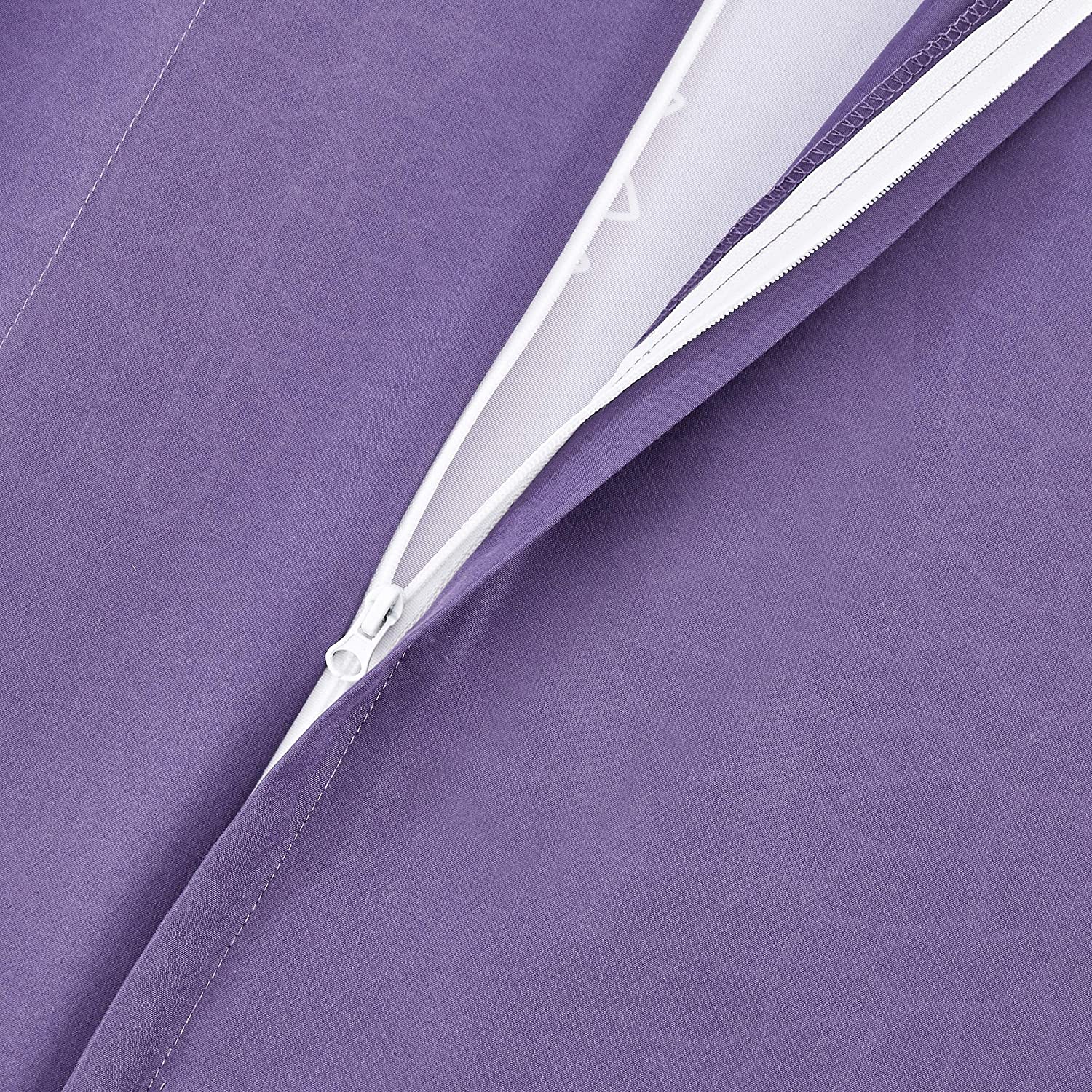
Duvet covers typically fasten with a zipper or buttons, and there are pros and cons to each fastener.
Duvet covers are designed to be easily removed so they can be laundered frequently. The style of closure, however, varies depending on the product—some close with a zipper, others with buttons.
While zippers are easy and quick to use, they will need to be replaced if they break. Another disadvantage of duvets with zipper closures is that they may snag on the duvet insert’s shell and cause a rip or tear.
Buttons may be more time-consuming to open and close, but are easier to sew back on if necessary. Many high-quality duvet covers feature interior ties at the corners that help the duvet insert stay in place.
A duvet cover can serve as a standalone bed covering.
If you invest in a stylish duvet cover that matches your room’s bedding and decor, why tuck it away all summer? Empty duvet covers can serve as light bedding. With two layers to form the insert pocket, duvet covers typically are warmer than sheets but wick more and feel cooler than many blankets. Further, a top sheet might be a necessity when using blankets, but some sleepers prefer to use washable duvet covers in place of a top sheet, even in winter with the insert in place.

